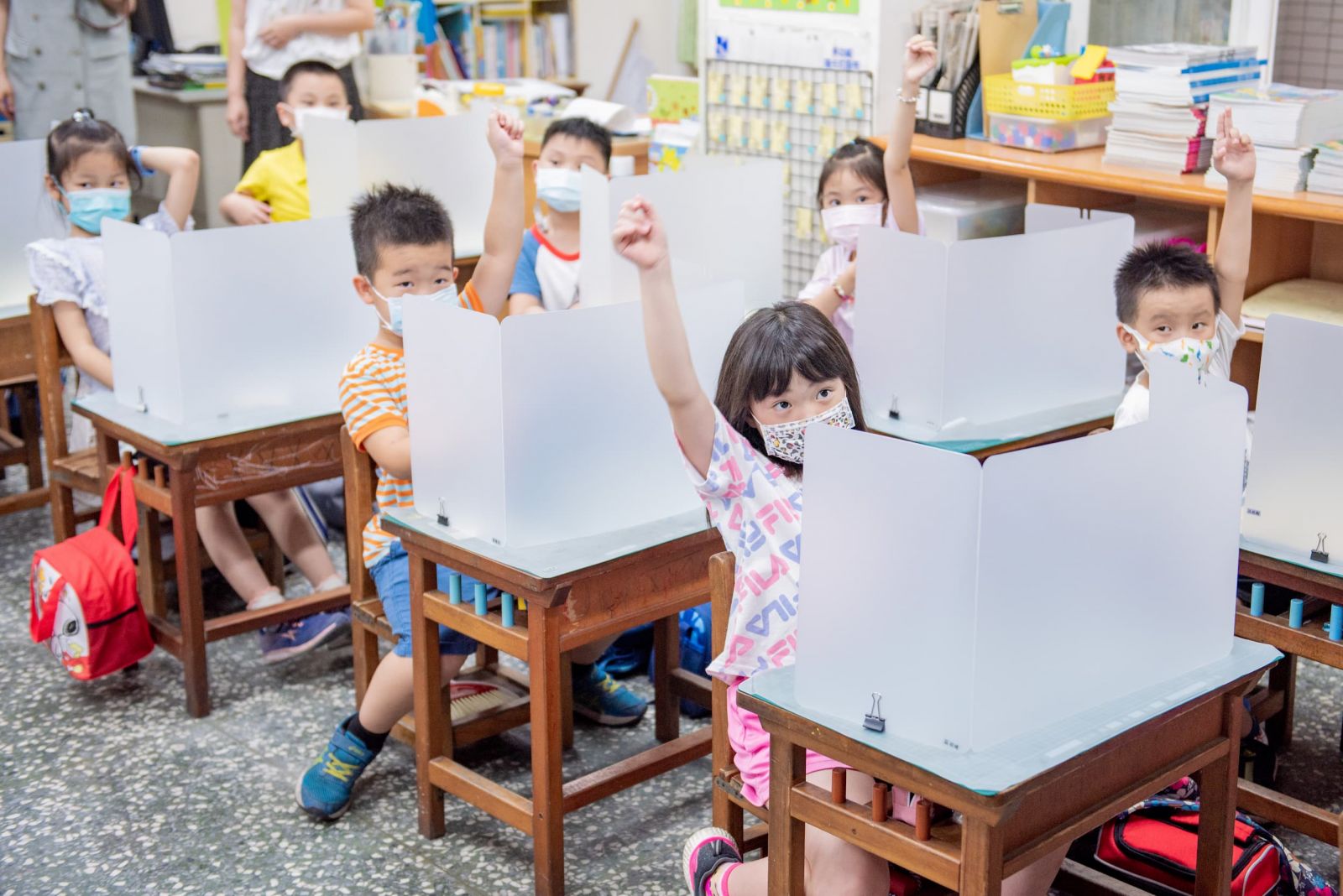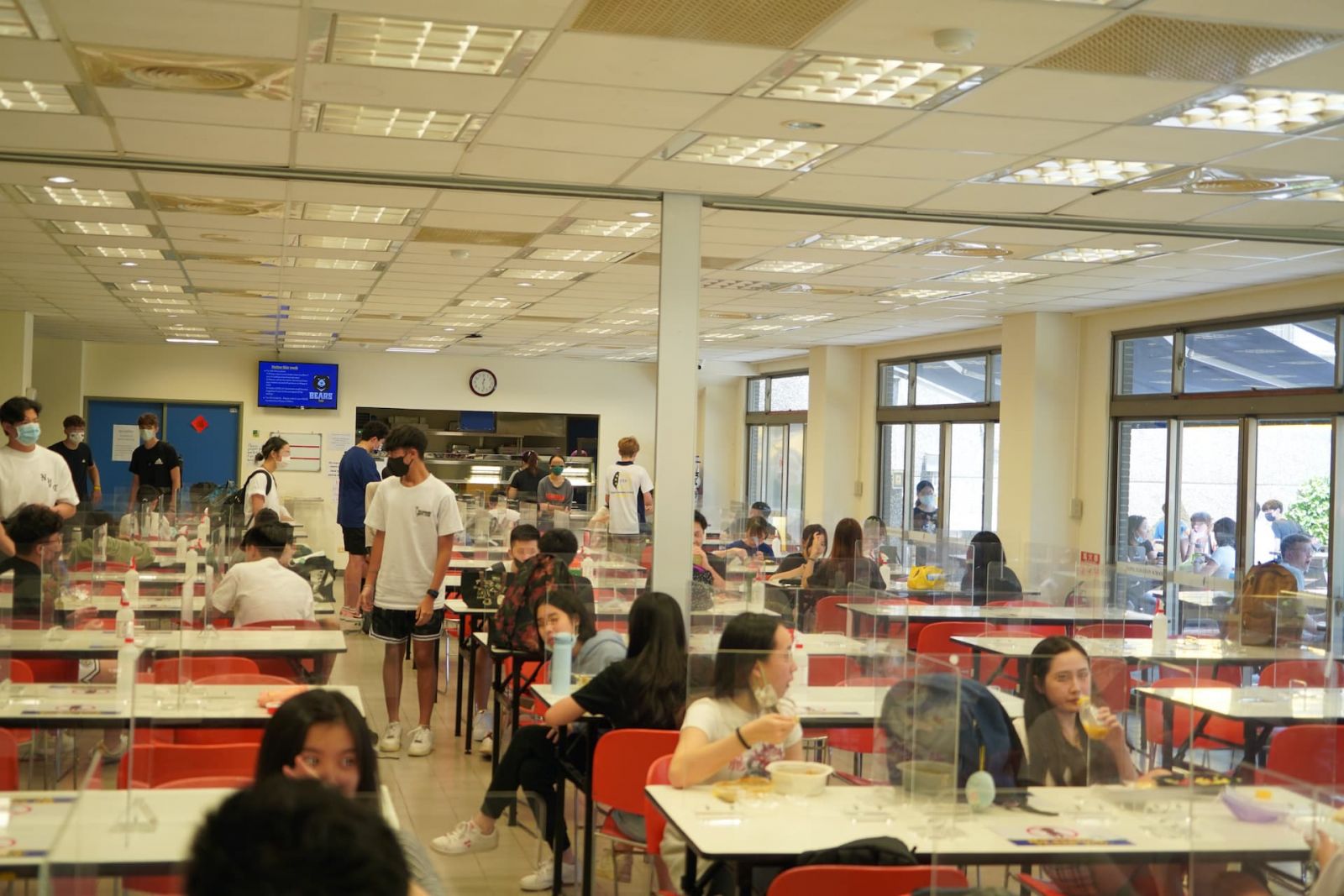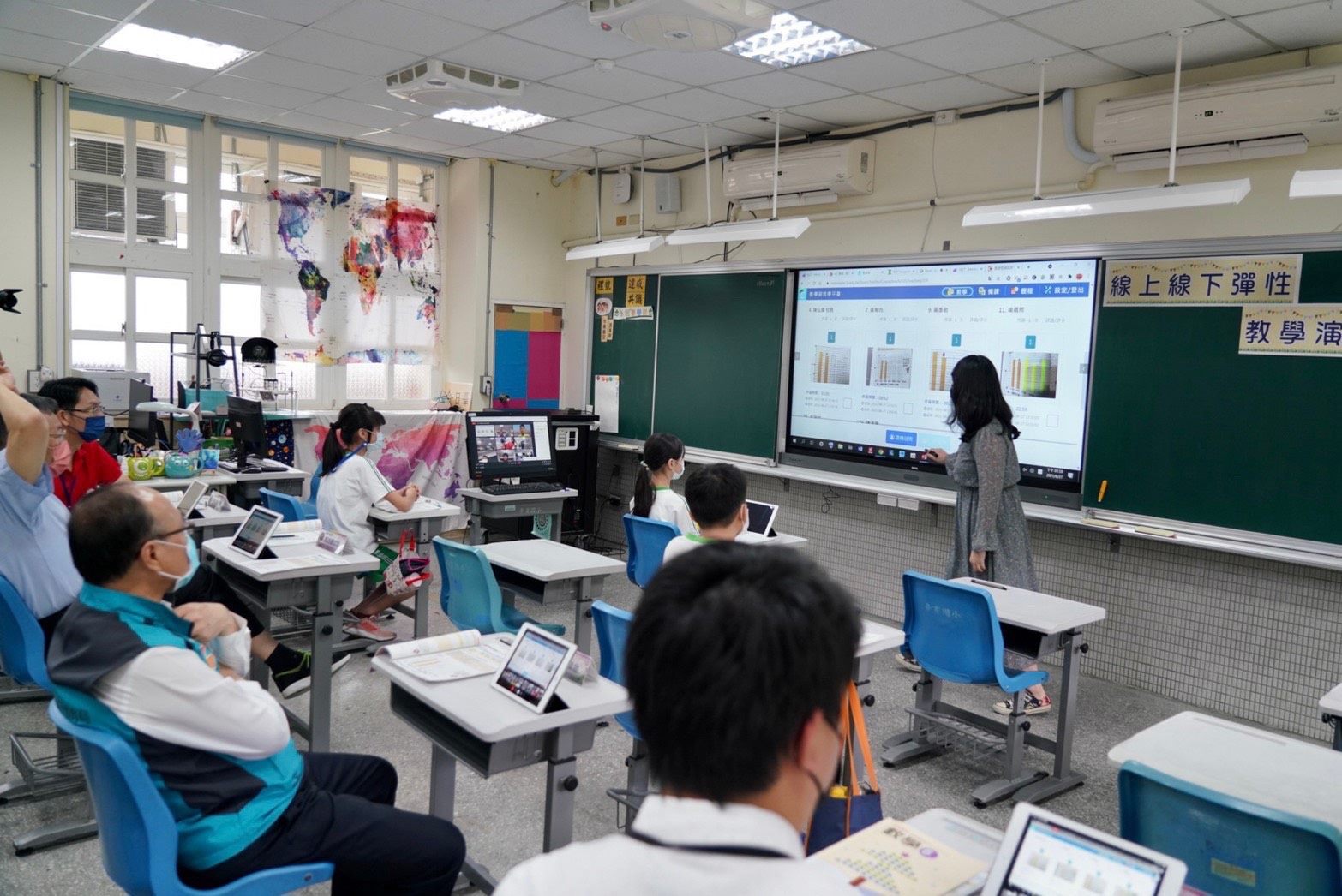Life & Art
Back to school and into post-Covid learning
As students head back to school this month, it might not be ‘business as usual’ just yet
By Joanna Lee

Students at a local Taoyuan elementary school show off their new setups.
Photo credit: Taoyuan City Government.
Every new school year inevitably comes with some back-to-school jitters. This year, however, students, parents and teachers are contending not only with new textbooks and school supplies, but also Covid-19.
For our sophomore year in this tumultuous global pandemic, the schoolyard is a new kind of battleground. After all, Covid-19 has all but gone away, but students around the world are stepping foot inside the classroom – many for the first time since the onset of the pandemic. In spite of high vaccine coverage rates in various locales, new spikes and rolling lockdowns have many watching on in anticipation; what exactly should we be expecting from this new school year?
After a long and mostly indoor summer, Taiwan’s students also went back to school earlier this month. As the outbreak in May brought Taiwan’s Covid success story to a temporary stop, schools across the nation closed their doors on 18 May. Students and teachers who had enjoyed more than a year of uninterrupted in-person learning suddenly found themselves scrambling to transition online – not exactly smooth sailing in every instance, as I noted in a Euroview article back in June.
Then, summer vacation came, offering little to no reprieve under level 3 restrictions. Stories of worn-out parents managing their kids’ boredom, restlessness and screen addictions were peppered throughout local media, during what many humorously dubbed ‘the longest vacation in history’.
Now, with fewer Covid cases, higher vaccine coverage and the Central Epidemic Command Center dialling restrictions back to level 2, the school doors are wide open for students to regain a sense of routine and normalcy.
The silver lining here might just be a newfound appreciation of school, says Kerry Nockolds, Taipei European School’s director of community relations and marketing.
“The feeling of being back in contact with colleagues, students, or students with their friends, has really raised spirits,” he says.
Taipei European School students headed back to school on 23 August, a week earlier than their local counterparts. Not only are they reacquainting themselves with ‘masks on at all times’, temperature checks and social distancing in the classrooms – baseline Covid-safe practices introduced since the beginning of the pandemic – they are also settling into new preventative measures.

Taipei European School introduces new Covid-safe measures for lunchtimes.
Photo credit: Taipei European School.
On top of using Perspex dividers, TES has also taken the extra steps of introducing allocated seating and time slots – particularly for lunchtimes in the school cafeteria. Not only are students split into lunch groups for different timeframes, but the school has also added extra outdoor seating to allow for more social distancing inside.
In addition, TES has also implemented allocated seating for classes, as well as capacity limits on school buses, so that students don’t need to share seats.
According to Nockolds, such endeavours have all been predicated on the organisation of staff and faculty members, who are willing to put in the effort to “make the best of a difficult situation”.
“Being an international school, we have lots more people coming in and out of the country,” he says. “So we’ve been slightly more geared up for where we are at now than perhaps a local school.”
Beyond being extra precautious and prepared, Taipei European School was also fortuitous enough to get ahead of the curve in digital learning.
According to Nockolds, TES had already begun to train teachers on integrating digital platforms and technologies into the classroom prior to Covid-19, as part of the school’s larger strategic vision.
“We had been preparing for something we had no idea was going to happen, for a completely different reason,” he says. “So, when the pandemic arrived, we were able to just pivot and change our direction to meet the needs of digital learning.”
Now, having delivered six weeks of digital learning during the May-June school suspension, Nockolds says TES would be able to switch back to its online mode “almost instantaneously”, should the country snap back into Level 3 restrictions.
However, he adds that the ‘hybrid learning’ model will be a little harder to contend with, given that it is something that has yet to be put into practice.
The hybrid learning model, which would see a mixture of in-person teaching and online content, has generated a lot of buzz in the education sector in recent months – as schools and local governments begin to plan for its implementation. Just days before schools reopened, Taipei City’s Department of Education announced that it has already recorded 1,433 educational videos, and aims to release 2,206 videos on subjects like Chinese, English, maths, biology, chemistry and more by the end of this year.

Department of Education officials test out hybrid learning at a local Taipei City school.
Photo Credit: Department of Education, Taipei City Government.
Beyond a pure hybrid online-offline curriculum, the model would also require teachers to teach classes both in-person and online simultaneously. While this is oriented towards students impacted by community infections, school suspensions and general upticks in cases, it also pertains to those on vaccine sick leave, as the vaccine rollout is set to begin for 12-17 year-olds.
With the recent news of a Taipei and New Taipei schools cluster, and 4,800 students now affected by the subsequent school closures, this kind of post-Covid learning only seems one step closer to becoming a new reality.
However, the hybrid learning model has not been met with blanket enthusiasm. A survey conducted by Taipei’s Department of Education showed that while 38% of principals and 48% of parents supported the move, only 27% of teachers were in favour – many of whom citing scepticism over the technical barriers in providing such an education experience.
Under these Covid conditions, delivering holistic education whilst mitigating against the risks of Covid has become a delicate and often unachievable balancing act. As Kerry Nockolds rattles off the extra-curricular activities at TES that students would usually undertake – robotics club, model UN, gymnastics – but can no longer under current restrictions, it is as if the luxury of going back to school also comes with the caveat that it won’t be 100% of what it used to be.
With Covid’s shifting goalposts, the school year may continue to look unpredictable. But as Nockolds explains to me, their school is “preparing for the best situation and the worst situation.”
Joanna Lee is a Taiwanese-Australian freelance writer, editor and translator based in Taipei